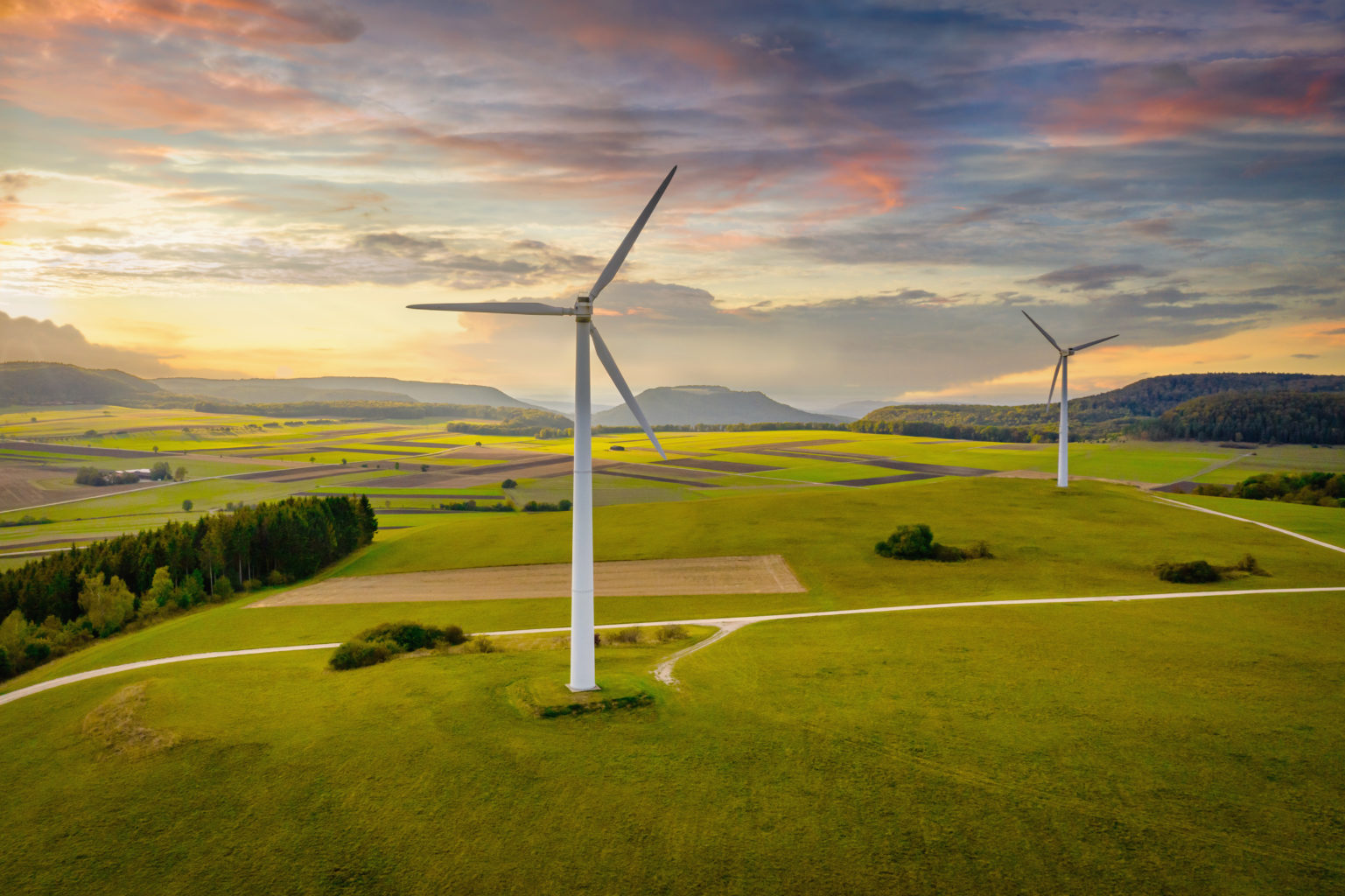On 14 December 2020, the Department for Business, Energy and Industrial Strategy (BEIS) published its long awaited Energy White Paper on ‘powering our net zero future’.
This comes hot on the heels of the Prime Minister’s ‘ten-point plan for a Green Industrial Revolution’ and the National Infrastructure Strategy published in November, and gives us more detail on the Government’s plans to ‘clean up our energy system and keep bills affordable’ during the UK’s transition to carbon neutrality.
The level of ambition here is high; the cumulative effect of the initiatives proposed in the ten-point plan, designed to leverage billions of pounds of private investment and support up to 250,000 jobs by 2030, are aimed at reducing UK carbon emissions by 180 million tonnes between 2023 and 2032.
This post explores the key points from the recent Energy White Paper, including insights from our energy specialist partners.
Ten Point Plan
1. Quadrupling (to 40GW) by 2030 offshore wind, plus support for onshore wind and solar through participation in the next CFD auction
2. Growing low carbon hydrogen
3. New and advanced nuclear power
4. Ending the sale of new petrol and diesel cars from 2030, and related measures
5. Support for green transport, cycling and walking
6. Net-zero aviation and green ships
7. Greener buildings through increased energy efficiency and a move away from fossil fuel boilers
8. Deployment of Carbon Capture, Usage and Storage (CCUS)
9. Protecting our natural environment
10. Green finance and innovation
Energy White Paper – key commitments
Transformation
- Targeting 40GW of offshore wind by 2030 (including 1GW of floating wind)
Supporting the deployment of Carbon Capture Usage and Storage (CCUS) in four industrial clusters, one to include a CCUS power plant - Establishing a new UK emissions trading scheme aligned to the net-zero target
- An aim to bring at least one large-scale nuclear project to a final investment decision
- Consulting on whether it is appropriate to end gas grid connections to new homes built from 2025
- Growing the installation of electric heat pumps
- Building world-leading digital infrastructure for our energy system
Green recovery from COVID-19
- Aiming to deliver four low-carbon clusters by 2030 and at least one fully net-zero cluster by 2040
- Investing £1bn up to 2025 to facilitate CCUS in two industrial clusters
- Aiming to develop 5GW of low-carbon hydrogen production capacity
Consumers
- Further work to explore opt-in switching
- Reform of current auto-renewal and roll-over tariff arrangements
- Assessing what market framework changes are needed to encourage the development of innovative tariffs and products
- Extending market regulation to third party intermediaries
- A Future Homes Standard so new homes are “zero-carbon ready”
- Measures to improve the energy performance of homes
- Rented non-domestic buildings to be EPC Band B by 2030
- Extending the Energy Company Obligation to 2026, and more money for the Warm Home Discount
This Energy White Paper is hugely significant, because it puts some of the meat on the bones of the ten-point plan, setting out the energy-related measures that will be needed to deliver the long term strategic vision consistent with net-zero emissions by 2050.
And for possibly the first time, we are starting to see the makings of a deliverable plan that is wide-ranging in scope and looks at the energy system holistically.
More detail to come…..
A testament to the scale of ambition of the White Paper is the extent of paperwork that was published alongside it, and that which is still to come. Notably:
Related articles
Related services
Peter Dilks, partner in our real estate team, says: “While natural gas is not the long-term future, the UK’s current energy mix means that in the short-medium term there is still a need for natural gas, and developers are balancing their renewable portfolios with other generation methods and technologies. Hydrogen is a natural progression, with the benefit of an existing gas infrastructure network across the UK, but the reality of large-scale hydrogen production feels a long way off without some sort of state intervention to carry this through.
“There was also a lack of clarity on how biomethane projects fit into the transition away from natural gas. This is still relatively small-scale, but I would hope that as planning policy emerges, due consideration is given to how existing AD plants can help the transition to biomethane gas to grid projects, if we are serious about reducing our use of natural gas.
“Clearly the decarbonisation and reduction in the UK’s use of natural gas will need a much larger deployment of both onshore wind and solar. These alone won’t be enough, but it is encouraging to see both of these technologies taking a prominent position in the White Paper and the news that the 2021 CfD includes onshore wind and solar is another positive step forward. What we shouldn’t forget, however, is that the increased use of renewables obviously brings with it system costs, reinforcing the need for a diverse technology base in the UK’s electricity generation.”
Andrew Whitehead, Head of Energy, says: “The prospect of using existing infrastructure, notably our natural gas networks, to supply clean hydrogen to homes and businesses for heating, is an exciting one - although more work is needed to explore feasibility, and increased government funding for testing and trialling projects is to be welcomed. This could offer a practical and cost effective heating alternative to heat pumps and achieve economies of scale, not possible by reliance just on biomethane.
“Critical though is commercialising the production of hydrogen with significantly lower greenhouse gas emissions than presently achieved. The hydrogen strategy will hopefully show how the UK can quickly ramp up production capacity and become a world leader.”
Ian Griffiths, partner in our construction team, says: “The theme of the Energy White Paper on the nuclear sector appears to be belated enthusiasm and diffuse ambition. It is odd given the imminence of the net zero target and the availability of gigawatt scale plants with approved design and sites that they are not being prioritised beyond the one identified.
“The encouragement to Small Modular Reactors (SMRs) is welcome as their deployment in the timescale given is feasible but there is doubt in the industry whether the same can be said of Advanced Modular Reactors (AMRs) particularly as there are too many competing designs and applications.
“The release of the RAB Consultation response was again lacking in detail, for example, on the role of ONR or another body to regulate the model, and with promises of further work to be done. The in principle acceptance of the RAB model in nuclear is welcome but long overdue. The SMRs and AMRs would still face the very high licensing and planning costs and lengthy timescales faced by their larger gigawatt counterparts. These hurdles are not addressed in the White Paper either.”
Mark Bartholomew, partner in our energy, says: “The UK of course has previous experience in setting up independent emissions trading the UK, having developed a forerunner to the EU ETS. To be regarded as a success the new UK ETS will need to operate efficiently. As in any commodity market that will require it to achieve liquidity. Ironically that may mean linking it with the EU ETS.
“There is continuity for UK businesses previously covered by the EU scheme, but going forward the key issue will be how the UK scheme emission cap will be aligned to a net zero trajectory, and we await a consultation from Government on this. This will be vital in setting the correct price signal to drive the necessary capital investment in clean energy technologies.”
Eddie Flanagan, partner in our asset finance team, says: “The long awaited Energy White paper contains little that is new to those working within the electric vehicle (EV) supply chain. The industry does appear to be ahead of Government, with many new products hitting the market at breakneck speed, notably refrigerated EVs, which are supporting the vaccine rollout.
“Government must provide a clear regulatory framework to support this, in particular because autonomous vehicles will quickly follow EVs as the UK is leading the world on implementation. In terms of batteries, anxiety range is decreasing, but the industry needs support in terms of charge point catch up, GIGA factory support and regulatory clarity about end of life usage/disposal.”
Sushma Maharaj, partner in our energy team, says: “The Energy White Paper, along with the Government’s current initiatives (e.g. HNIP Scheme and Smart Export Guarantee) and future initiatives (e.g. Green Heat Network Fund, Future Buildings Standards, Public Sector Decarbonisation Scheme and Social Housing Decarbonisation Fund) recognises the importance of low carbon heating and energy efficient buildings in saving our planet – and converge to signpost a seismic shift for developers and energy services companies (ESCOs).
“Increasingly, developers and ESCOs will need to consider the integration of energy efficient building fabric, on-site renewable generation (e.g. rooftop solar), low carbon heating (e.g. heat pumps), and smart energy infrastructure (e.g. smart metering, electric vehicle charging) as energy production, supply and trading becomes more low carbon and community based.”
Tim Speed, partner in our commercial litigation team, says: “Over the past few years the Government and Ofgem have sought to keep prices down, whilst at the same time demanding excellent customer service and promoting competition. This has resulted in a number of suppliers exiting the market. The White Paper seeks to address how the Government will approach the flexibility in generation and the changes in consumption patterns that are currently being seen and which are expected to continue.
“Technology and energy efficiency will play a key role as smart meters and innovation will be at the heart of the Government’s focus. At the same time, fairness and affordability will remain a top priority and it is yet to be seen how the Government will approach this delicate balancing act.”
Mark Bartholomew, partner in our energy, says: “Achieving net zero will require substantial investment and innovation to transform the electricity networks. The RIIO price controls will therefore need careful calibration to achieve the right balance between risk and reward.
“Introducing competition for onshore network assets will not be without its challenges. The potential for cost savings will need to be weighed against the transaction costs and only the highest value projects are likely to have the potential for achieving customer benefits. There may also be operational challenges that may arise from fragmentation of the networks.”
Brian Mullin, partner at Marrons Planning, says: “The review of the national (planning) policy statements (NPSs) by the end of 2021 is overdue. Adopted in July 2011, the current suite of policy statements for renewable and fossil fuel-based development types identifies the need to develop more fossil fuel-based energy capacity and says planning decisions on such developments should start from a ‘presumption in favour of granting consent’. Since then, solar, storage and floating offshore wind projects are meeting NSIP thresholds.
“The focus on and support for renewable technologies is to be expected; however don’t expect promotion for renewable technologies in a revised NPS for renewable technologies to be offset by an unduly restrictive approach towards any further fossil fuel-based energy capacity. Section 104 of the Planning Act provides that, where an NPS applies, the Secretary of State must determine an application for development consent in accordance with it; and where the adverse impacts of the proposed development outweighs its benefits, then it may refuse development consent.
“The judgement of weighing benefits and adverse impacts, (a fundamental tenant of the Planning Act), will be retained in the NPS updates and should continue to empower decision makers to meet our nation’s growing demand for energy.”
The bigger picture
This plethora of announcements and consultations, which will continue throughout 2021, is intended to put the UK centre stage as we near the COP26 climate summit in November. Five years after the COP21 climate talks in Paris, the UK used the Climate Ambition Summit in December 2020 to announce its revised “nationally determined contribution” (NDC). This strengthened UK commitment – 68% from 1990 to 2030 - will form part of the concerted efforts in COP26 to improve on the current NDCs which together imply a three degrees global warming, well above the Paris commitment of two degrees (with the goal of 1.5 degrees) which represents severe global climate impacts.
Crucially, by June 2021 the Government is required under the Climate Change Act 2008 to legislate for the latest sixth carbon budget. These budgets are a five-year statutory cap on greenhouse gas emissions, the first three being set in 2008 and covering the period 2008 – 2023, whilst the fourth budget (set in 2011) covers 2023 -2027 and the fifth budget (set in 2016) 2028 – 2032. Whilst previous budgets have steered a course towards the previous 80% by 2050 reduction target, the sixth budget will be the first to address the new 2050 net-zero emissions cap.
In December, in its recommendations for the UK’s sixth carbon budget, the Climate Change Committee advised a cap of 965 million tonnes of CO2 equivalent for the period 2033 – 2037 (equating to, on average, 193 million tonnes annually), representing a target reduction of 78% by 2035 relative to 1990 levels, a 63% reduction from 2019 and consistent with the UK’s revised NDC.
What needs to emerge over the next few months, as the Government begins to give colour to its vision with more detailed and extensive policy announcements, is a closing of the policy gap. The Committee on Climate Change has reported that the UK is set to miss the fourth and fifth carbon budgets based on current policies – and the fifth budget itself is less ambitious than the revised NDC.
So, as we move towards COP26, 2021 looks set to be a pivotal year, and an especially busy time for policymakers in Spring with a raft of consultations imminent. What seems clear is that the initiatives contained and trailed in the Energy White Paper must contribute to a particularly dramatic drop in emissions in the 2030s if the UK is to meet its national and international obligations. We must very quickly move from the drawing board to the delivery phase.
Get in contact
If you have any questions on The Energy White Paper, or need any guidance or support get in contact or contact a member of our energy team.
If you would like to read more of our energy blogs and guides sign up to our mailing list to join our quarterly energy mailer.
Our free legal helpline offers bespoke guidance on a range of subjects, from employment and general business matters through to director’s responsibilities, insolvency, restructuring, funding and disputes. We also have a team of experts on hand for any queries on family and private matters too. Available from 10am-12pm Monday to Friday, call 0800 689 4064 or request a callback.












